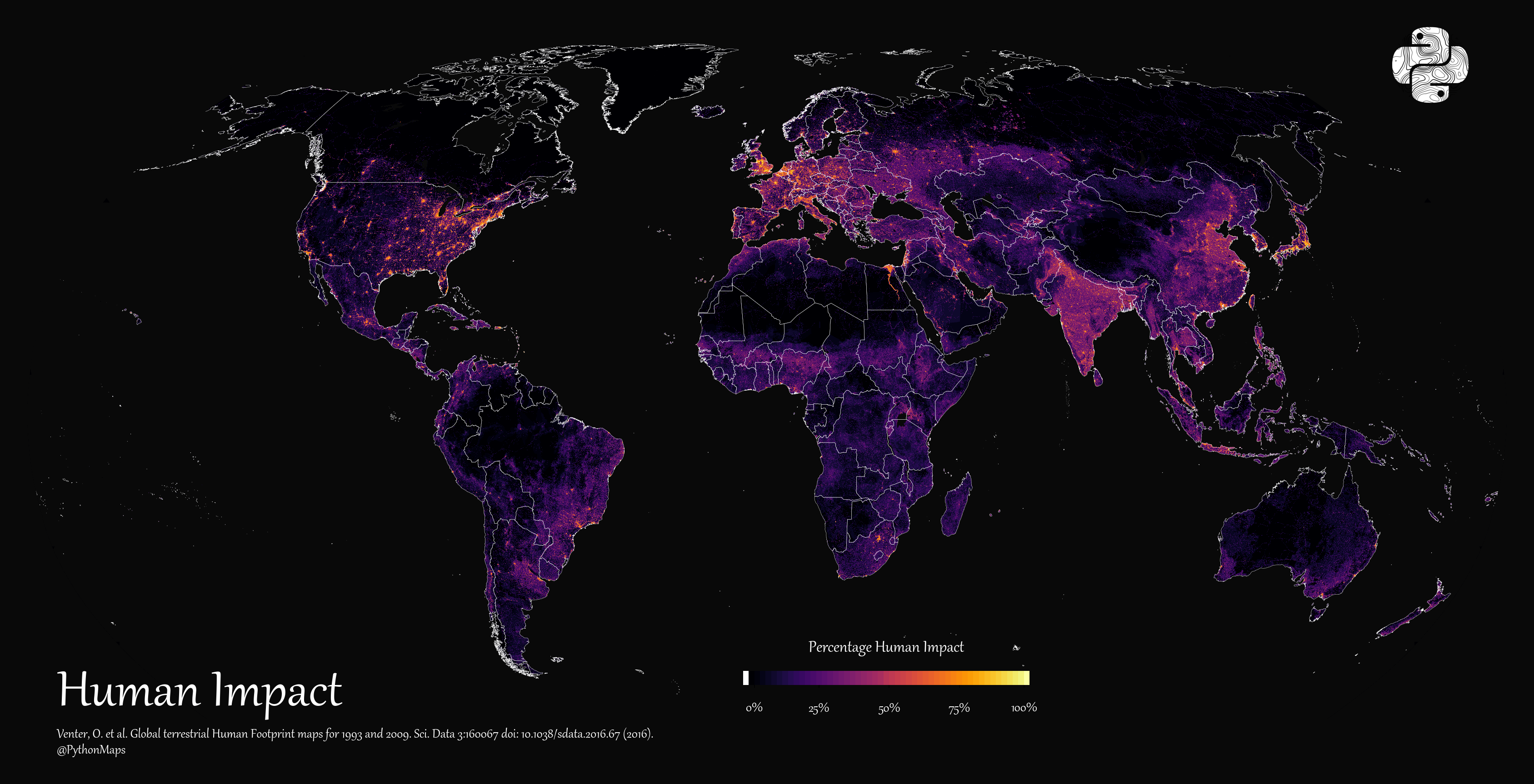
Click to view this graphic in a higher-resolution.
Mapping Human Impact Across the World
Since the dawn of human history, our activities have left an impact on Earth—from gathering food to farming, from building homes and cities to traveling across oceans.
And as the global population expanded and civilizations became more complex, that impact grew alongside it. Mass agriculture, natural resource extraction, and creation of urban infrastructure are just some of the visible markers of modern human development.
In this graphic, Adam Symington maps the extent of humanity’s impact on the world from 1993 to 2009, using information provided by the scientific paper titled “Global Terrestrial Human Footprint Maps for 1993 and 2009.”
Variables for Measuring Human Impact
To accurately plot and measure human impact, the researches compiled studies and surveys from 1993 to 2009 across eight variables of human “pressure”:
- Built environments
- Population density
- Night-time lights
- Croplands
- Pasture
- Roads
- Railways
- Navigable waterways
These different pressures were then normalized and weighted, as some have a noticeably greater impact on the surrounding environments than others. Once plotted and overlayed, we can see where human impact was the highest.
What Caused the Largest Impact?
According to the research, increases in population density, housing development, and road and rail networks were the primary growth factors for human impact.
This caused the overall footprint to increase dramatically in densest urban centers of the world. The brightest and most visible on the map include:
- The Boston–Washington corridor (including New York City) in the U.S.
- The “Blue Banana” corridor in Europe from the UK to Northern Italy.
- The Nile Delta and Greater Cairo in Egypt.
- The Taiheiyō Belt in Japan (including Tokyo and Osaka).
Many other areas in South America, Central Africa, and South Asia, also saw human impact increase due to both increased urbanization and agriculture. Especially noticeable is the relatively even growth in human impact across Pakistan, India, and Bangladesh.
Untouched Wildernesses
While humanity’s footprint has transformed various parts of the world, some areas have been left untouched, to some extent.
The frigid Arctic terrains of Northern Canada, Greenland, Iceland, and Eastern Russia barely saw any change between 1993 and 2009.
Likewise, the Amazon rainforest in South America, the Sahara Desert in Africa, the Tibetan Plateau in Asia and the desert in Western Australia had large swaths of land with almost no human impact. However, they all had small patches of measured human impact, either through infrastructure development or resource extraction.
And though there were still corners of the Earth with little to no human impact in 2009, changes since in demographics, politics, and consumption could have an outsized effect on humanity’s footprint both now and into the future.
The post Mapping Human Impact Across the World appeared first on Visual Capitalist.